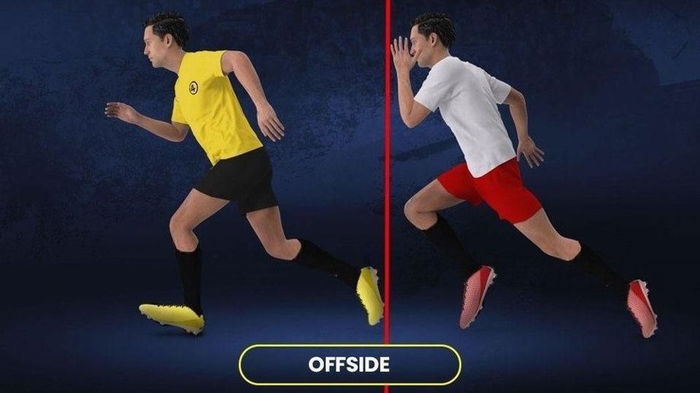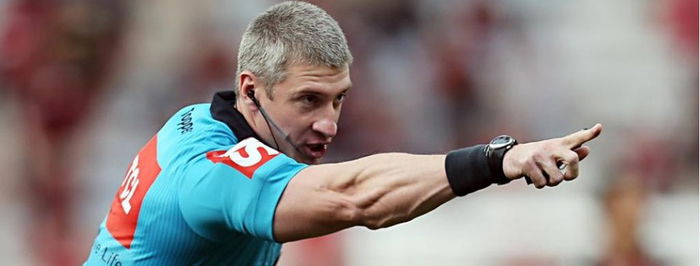With the intention of reducing offsides on the field, making them easier to “detect”, FIFA Head of Global Football Development Arsène Wenger proposed that the offside rule change.
The new rule proposes that offside is only called if the attacking player is 100% in front of the defender. Any part of the attacker's body “on the same line” will not be marked.

This proposal was approved and will be sent to the IFAB (International Football Association Board), which is the entity that controls Football rules.
If this change is introduced It will be one of the most radical changes in football in recent years.
However, it wasn't the only one, so I decided to bring you all the main Rule changes in the history of football.
Let's get to the list!
Football Rules - Main Changes
1865
- The goalposts have a ribbon to determine the “limit” height of the goal, like a kind of crossbar.
1866
- Now players can pass the ball forward, as long as 3 opponents are between the pass receiver and the goal. This is how the offside rule was born.
- Players can no longer catch the ball with their hands in the air.
1868
- Referees and Flags are official.
1869
- The Goal Shot rule is introduced. Previously, after leaving the baseline, possession of the ball was determined by the team that got the ball first.
1871
- Now only one player from each team can catch the ball with their hands. Giving rise to the Goalkeeper.
1872
- Goalkeepers can only catch the ball with their hands on their own field
- The corner kick is introduced.
1874
- Each side of the field must now contain a referee. Although they were made official some time ago, plays such as fouls and free kicks were decided between the team captains.
- Now the players switch fields after the break. Previously, the field was changed after each goal.
1875
- The dash is inserted into the Goal.
1877
- Games must now last up to 90 minutes.
1891
- The Penalty rule is introduced, however, it can be taken from any position on the field, as long as that position is within 12 yards (approx. 11 m) of the goal.
- A new referee was also introduced, the two existing referees became assistants to this new referee.
- Now the Goals must have nets.
1892
- The stoppage time rule was introduced to prevent players from purposely kicking the ball out of bounds, preventing the opposing team from covering a free kick, or having possession of it.
1895
- Throw-ins are now the form we know them today. Previously, possession of the ball belonged to whoever caught the ball first after it went out.
1902
- Area lines are created.
1904
- The ball advantage rule is created. The Referee does not need to call a foul if the team that suffered the foul maintained possession of the ball and has a promising attack.
1907
- A player cannot be in an “offside position” within his own field.
1912
- Now goalkeepers can only have possession of the ball with their hands inside their areas.
- Goalkeepers must wear a different uniform than the other players in the match.
1913
- Opposing players must respect a distance of 9 m from the free kicks of the team in possession of the ball.
1924
- Corner goals are now allowed, after Argentina scored a goal in this way against Uruguay, which was the current Olympic champion, naming this type of goal “Olympic Goal”.
1925
- Now players can pass the ball forward as long as the pass receiver is in front of two markers, instead of 3.
1937
- A half-moon line is drawn on the fields, to determine the distance at which players must be from the ball during a penalty kick (except the goalkeeper and the penalty taker).
1938
- Now players can be sent off the field if they commit a “Serious” foul.
1939
- It is now mandatory to use numbers on players' shirts to identify them.
1958
- Teams are now allowed to substitute 1 player per game if he is injured.
1970
- Knockout games that end in a draw are decided by penalty kicks.
- Yellow and Red cards are introduced. Based on traffic lights. Previously, any warning or expulsion was verbal.
- Teams can now make two substitutions per game, for any reason.
1980
- Spitting or swearing at opponents is now considered unsportsmanlike conduct and is subject to a warning or expulsion.
1988
- The goalposts must be painted white.
1992
- The step-back rule is introduced, which prohibits goalkeepers from catching balls with their hands that are passed to them with their feet by their teammates.
1993
- The technical area is created at the edge of the field.
- The “Golden Goal” rule is created. During extra time, the first team to score a goal won the match.
1995
- Teams can now make 3 substitutions during a match.
2012
- In order to end controversies, balls in official FIFA competitions now contain a microchip, which indicates whether they crossed the goal line or not.
2016
- It is prohibited for players to perform a “Paradinha” during a penalty kick. The player must be warned with a yellow card if he does so.
- If the last defender commits a foul, he must be warned with a Red Card. If the last defender commits this foul, but he touches the ball first, or he is “aiming the ball” he will only be punished with a Yellow card.
- Red cards can now be applied before, and even after the match. However, even if a player has been sent off before the game starts, the team must enter the field with 11 players.
- The player must be attended to on the field within 20 seconds, if this exceeds that, he must be taken off the field, and must wait for the referee's authorization to return to the match.
- It is now allowed to pass the ball backwards during the kickoff.
- Barriers with two rows of players are no longer allowed.
- The game must contain technical stops in very hot weather conditions.
- The player must take the throw using both hands.
- A player can continue to play barefoot if he loses his boot during the game. However, he must put on his boots again in the next stoppage. The same applies to shin guards.
- Players must wear underwear the same color as their uniforms.
2018
- The Video Referee (VAR) is introduced. This technology was approved in 2016. It only arrived in Brazil in the quarterfinals of the Copa do Brasil in 2018, and only debuted in the Brasileirão in 2019.
- Teams can now make a fourth substitution during extra time only.
2019
- Accidentally touching the ball with your hands is no longer allowed, and a free kick or penalty must be charged.
- Players must leave the field through the nearest line during substitutions.
- The ball no longer needs to completely leave the area during a goal kick or free kick. Goalkeepers can make short passes, or small touches of the ball to their partners inside the box, during the goal kick.
- The game must be stopped if the ball hits the referee. The referee must grant a “Bola ao Chão” move, that is, the referee gives possession of the ball to the last player, who touched the ball, before the game is stopped. If this happens in the area, the ball always belongs to the goalkeeper.
- Goalkeepers must now remain with at least one foot touching the goal line during penalty kicks.
- Members of the technical committee such as: Massagers, directors, technical assistants, etc. They can be warned with a Yellow and Red card, and may even be sent off the field.
2020
- Teams can now make up to 5 substitutions during the game.
- The game can only be stopped a maximum of 3 times for substitutions to be made. The break does not count as a stoppage.
Conclusion

If you've read this far, thank you very much, I hope you had fun and enjoyed the content.
Don't forget to share this article on social media. Until next time!














— Commenti 0
, Reazioni 1
Diventa il primo a commentare